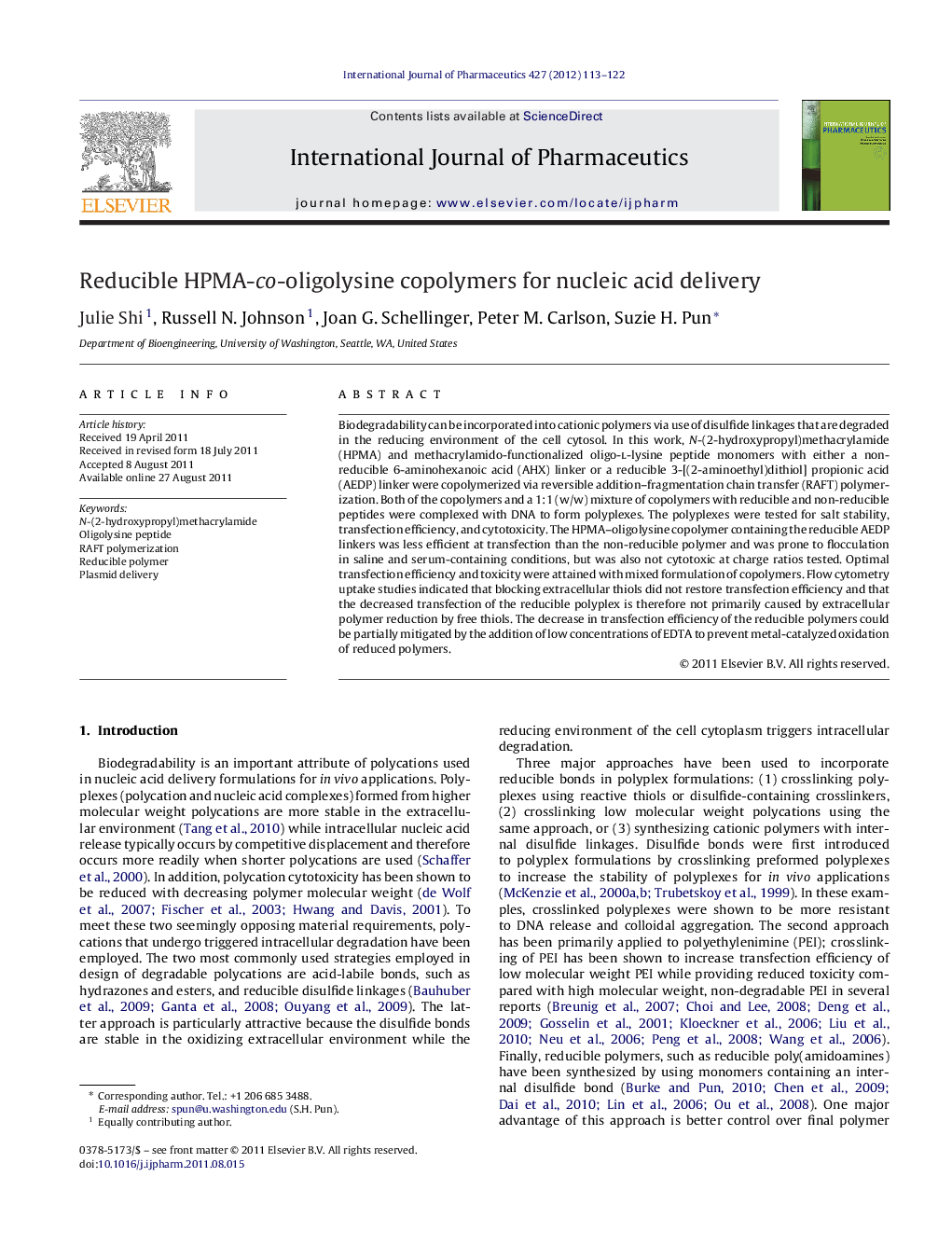| Article ID | Journal | Published Year | Pages | File Type |
|---|---|---|---|---|
| 2502952 | International Journal of Pharmaceutics | 2012 | 10 Pages |
Biodegradability can be incorporated into cationic polymers via use of disulfide linkages that are degraded in the reducing environment of the cell cytosol. In this work, N-(2-hydroxypropyl)methacrylamide (HPMA) and methacrylamido-functionalized oligo-l-lysine peptide monomers with either a non-reducible 6-aminohexanoic acid (AHX) linker or a reducible 3-[(2-aminoethyl)dithiol] propionic acid (AEDP) linker were copolymerized via reversible addition–fragmentation chain transfer (RAFT) polymerization. Both of the copolymers and a 1:1 (w/w) mixture of copolymers with reducible and non-reducible peptides were complexed with DNA to form polyplexes. The polyplexes were tested for salt stability, transfection efficiency, and cytotoxicity. The HPMA–oligolysine copolymer containing the reducible AEDP linkers was less efficient at transfection than the non-reducible polymer and was prone to flocculation in saline and serum-containing conditions, but was also not cytotoxic at charge ratios tested. Optimal transfection efficiency and toxicity were attained with mixed formulation of copolymers. Flow cytometry uptake studies indicated that blocking extracellular thiols did not restore transfection efficiency and that the decreased transfection of the reducible polyplex is therefore not primarily caused by extracellular polymer reduction by free thiols. The decrease in transfection efficiency of the reducible polymers could be partially mitigated by the addition of low concentrations of EDTA to prevent metal-catalyzed oxidation of reduced polymers.
Graphical abstractFigure optionsDownload full-size imageDownload high-quality image (101 K)Download as PowerPoint slide
